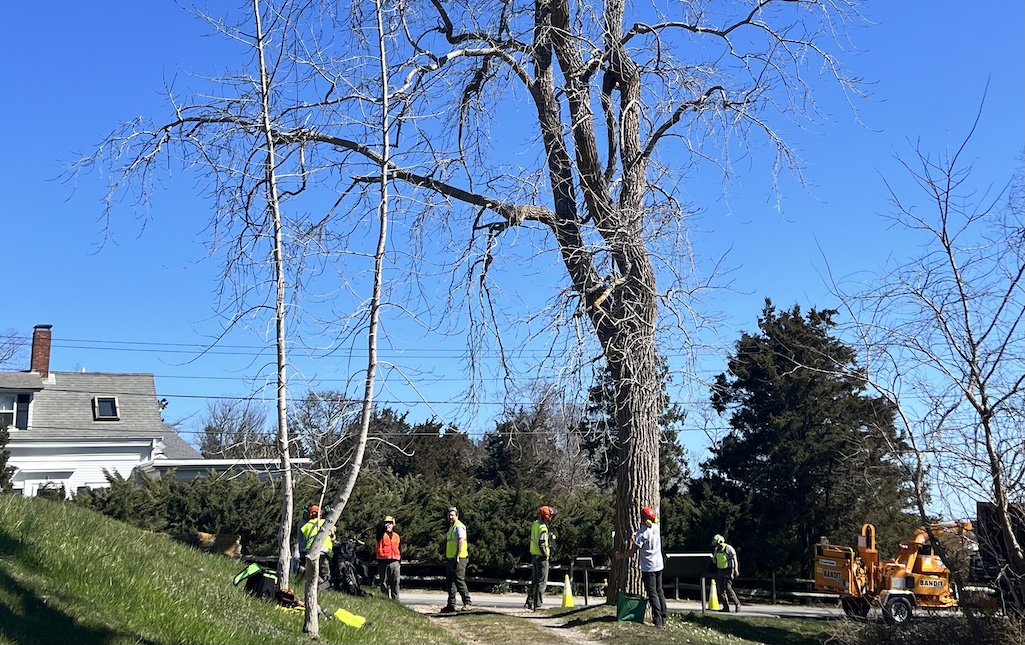I thought of the reasons why I like these classic magnum cartridges, and how they came to be. Then, I wondered whether it would be of interest to those who read these articles, so here it goes. I have used them all for many years and have taken game ranging from varmints to grizzly. During that time and based on my experiences, I have developed some strong, well-founded opinions.
.357 Magnum
I will start this “Trifecta” with the first and smallest of the three to make its appearance, the .357 Magnum. The .357 Smith & Wesson Magnum was based upon Smith & Wesson’s earlier .38 Special cartridge. It was collaboratively developed in the early 1930s. Those responsible for its creation were Elmer Keith, Philip B. Sharpe, Douglas B. Wesson (of Smith & Wesson), and the Winchester Ammunition Company.

The .357 Magnum cartridge was introduced in 1935, along with the Smith & Wesson Model 27, which was the first revolver chambered for the then-new .357 Magnum cartridge. So, the .357 Magnum cartridge began the “Magnum” era of handgun cartridges.
As a note, the “Magnum” era began with the term first being used by the British firm of Holland & Holland to describe its .375 H&H Express rifle cartridge in 1912. However, it was first used to describe a handgun cartridge with the .357 Smith & Wesson Magnum.
Because the .38 Special, and the early experimental .357 Magnum cartridges loaded by Elmer Keith were identical in size and length, it was possible to load an experimental .357 Magnum cartridge into a .38 Special revolver with catastrophic results. Smith & Wesson’s elegant solution of extending the case slightly, made it ‘less possible’ to chamber the magnum-power round in a gun that was not designed for the additional pressure.
It’s also interesting to note that although the .38 Special and .357 Magnum would seem to be of different diameter bullets, they are in fact identical at 0.357 inches and both cartridges also headspace on the rim of the case.

It’s of no surprise, since the introduction of the .357 Magnum cartridge, it has been regarded by many as an excellent choice for hunting, metallic silhouette, and self-defense. Comparatively, the .357 Magnum has less energy than the larger magnum revolver loadings, but none-the-less remains a fine small- and medium-game round.
It is also considered to be sufficient for deer at reasonable ranges when suitable loads are used by a proficient marksman. With proper loadings, it can also be effective against large or dangerous game, such as bear and wild hogs. However, many consider the larger and more powerful magnum cartridges to be more appropriate.
Revolvers chambered in .357 Magnum have the significant advantage of also being able to chamber and fire the shorter — less-powerful — .38 Special cartridge. Compared to the .357 Magnum, the .38 Special is also lower in cost, recoil, noise, and muzzle flash. Those attributes make revolvers, which are so chambered, an ideal choice for novice shooters. Shooters who are not yet used to firing full-power .357 magnum loads and cannot afford the additional expense of buying a second lower-powered gun to train with. It is also an excellent round for those considering handloading ammunition, as it is economical and consistently performs well.

I decided I needed to have a .357 when an article for the Model 19 Combat Magnum caught my attention and started my search. At the time (the later half of 1968), they were hard to find but eventually one turned up at a local gun emporium. I used that first .357 Magnum revolver to shoot darn near everything — including the first hog that I ever shot.
.44 Magnum
The second magnum to arrive on the handgun scene was the .44 Magnum. Its development was very similar to the .357 that preceded it. Once again, the .44 Magnum was the result of years of tuned handloading and experimentation with the .44 Special by prominent writer and outdoorsman Elmer Keith.
Keith’s many years of experimentation with large-bore handgun cartridges using heavy bullets and higher-than-normal powder charges to achieve superior ballistic performance again paid big dividends. He continued using his formula of pushing heavy bullets at high velocities that he used for the .357 Magnum with the .44 Special. His efforts resulted in the .44 Special Magnum, which was a formidable cartridge for handgun hunting. It fired a 250-grain bullet at 1,200 fps.

Once again, Keith successfully lobbied Smith & Wesson to produce revolvers chambered for the magnum. Likewise, he convinced Remington to produce a commercial version of his new high-pressure loading. And so it was; Smith & Wesson’s first .44 Magnum revolver, the precursor to the Model 29, was built on December 15, 1955. The gun was announced to the public on January 19, 1956, and sold at a retail price of $140.
Ironically, the .44 Magnum’s popularity remained tepid among shooters for many years after its introduction. The cartridge did not really come to the attention of the general public until 1971, when it was prominently featured in the film Dirty Harry starring Clint Eastwood. In one of the movies most memorable lines the title character, “Dirty” Harry Callahan describes his Smith & Wesson Model 29 as “The most powerful handgun in the world!”
Since that time, the .44 Magnum has been eclipsed in power but has nevertheless remained one of the most popular commercial large-bore magnum cartridges ever conceived. Practically, the .44 Magnum is well suited for game — up to and including elk. With precise shot placement and deep-penetrating bullets, it has even been used to take the largest game on the planet.
Famously, publisher Robert E. Petersen took a world record Polar Bear with a Smith & Wesson Model 29 .44 Magnum. Later, it was used to take Cape Buffalo and elephants successfully.
Once I got my hands on a .44 Magnum, I used it on everything from Jack Rabbits to bears and everything in between with great success. I also carried it as a back-up and camp gun while on many big game or dangerous game hunts. Eventually, I got tired of the extra weight and came to a realization. If I could not stop my quarry with my rifle, the revolver wasn’t going to help — even if I could get to it. That thinking relegated my big magnum handguns (for the most part) to the rear of the safe, only to emerge occasionally during a class to wow the newbies.

.41 Magnum
Now, we come to the last — and my favorite — magnum of the trifecta, the .41 Magnum that debuted in 1964. In the early 1960s, the .357 Magnum suffered from restricted terminal ballistic effectiveness. Jacketed hollow point bullets were not yet commonly available, and manufacturer’s standard loadings consisted of simple lead bullets.
The powerful .44 Magnum (primarily a heavy hunting round) was considered overkill for police use and generated too much recoil for control under rapid fire. In addition, revolvers chambered for the .44 Magnum were considered too large, bulky, and heavy for the police to carry.
The .41 Remington Magnum was primarily developed for use in large-frame revolvers intended for hunting and law enforcement purposes. Once again, we see Elmer Keith and Bill Jordan, with some help from Skeeter Skelton, petitioning Smith & Wesson, Remington, and Norma in 1963 to produce a pistol and ammunition in .41 caliber. A pistol that would fall between the .357 Magnum and .44 Magnum cartridges in ballistic performance.

The Smith & Wesson Model 58, that was targeted for the law enforcement market, was introduced on July 10, 1964. Unfortunately, it never caught on well with police departments. The departments that adopted it had trouble getting their officers to successfully qualify with the big revolvers. Ultimately, the greater round capacities of most semi-automatic, magazine-fed pistols eclipsed the six-shot revolver for law enforcement.
Smith & Wesson did, however, produce a high-end, premium revolver, the Model 57 in .41 Magnum, primarily intended for the civilian market. Without a Hollywood movie to glamorize it, the .41 Magnum never enjoyed the popularity and success of either the .357 Magnum or .44 Magnum cartridge.
Even though the .41 Remington Magnum never took the spotlight from the more popular .44 Magnum and .357 Magnum cartridges, it has been around for a long time. Marshall and Sanow called the .41 Magnum “one of our most unappreciated calibers.” This brings us to the question, ‘Is this round a diamond in the rough, or does it deserve a place in obscurity?” The answer is “It’s a diamond in the rough!”
If so many shooters didn’t like the .41, why do so many believe it’s the best revolver cartridge ever made? That includes yours truly. I’ll tell you why. The .41 Remington Magnum does what its rivals do, but does it better in so many ways.
The cartridge is a great choice for handgun hunters who want a lot of power with less recoil than the .44 Magnum. It is also a great option for reloaders, especially those who cast their own bullets.

I personally believe the .41 Remington Magnum is the best, most versatile revolver cartridge available. A bold statement (I know), given the fact that there are so many other good, useful revolver rounds out there. The truth is, when all factors are weighed — lethality, accuracy, recoil, and versatility — nothing rivals the .41 Remington Magnum.
With standard factory ammo, the .41 delivers 25 percent more energy than the .357 Magnum with a wider, heavier bullet. This means it hits harder, makes a wider wound cavity, and all things equal, will penetrate as deep or deeper than the .44 Magnum. All this with the same recoil as a medium-framed .357 — when the .41 is fired from its larger-framed revolver. Take that Dirty Harry! Stay safe, train often and practice, practice, practice!
We all have a favorite magnum caliber, but which one is yours and why? What about the .327 Federal? Do you agree with the author that the .41 Magnum is the “best, most versatile revolver cartridge available?” Or, are your more in the camp of the .41 magnum being a compromise cartridge that is akin to the .40 S&W? Share your ‘spirited’ answers in the Comment section.





